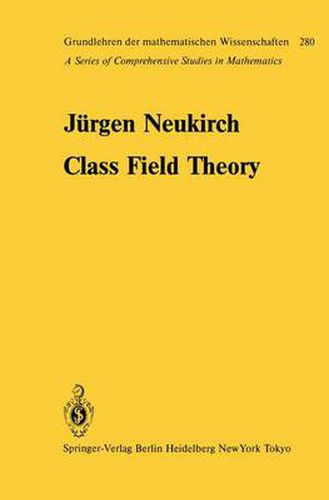Readings Newsletter
Become a Readings Member to make your shopping experience even easier.
Sign in or sign up for free!
You’re not far away from qualifying for FREE standard shipping within Australia
You’ve qualified for FREE standard shipping within Australia
The cart is loading…






This title is printed to order. This book may have been self-published. If so, we cannot guarantee the quality of the content. In the main most books will have gone through the editing process however some may not. We therefore suggest that you be aware of this before ordering this book. If in doubt check either the author or publisher’s details as we are unable to accept any returns unless they are faulty. Please contact us if you have any questions.
Class field theory, which is so immediately compelling in its main assertions, has, ever since its invention, suffered from the fact that its proofs have required a complicated and, by comparison with the results, rather imper spicuous system of arguments which have tended to jump around all over the place. My earlier presentation of the theory [41] has strengthened me in the belief that a highly elaborate mechanism, such as, for example, cohomol ogy, might not be adequate for a number-theoretical law admitting a very direct formulation, and that the truth of such a law must be susceptible to a far more immediate insight. I was determined to write the present, new account of class field theory by the discovery that, in fact, both the local and the global reciprocity laws may be subsumed under a purely group theoretical principle, admitting an entirely elementary description. This de scription makes possible a new foundation for the entire theory. The rapid advance to the main theorems of class field theory which results from this approach has made it possible to include in this volume the most important consequences and elaborations, and further related theories, with the excep tion of the cohomology version which I have this time excluded. This remains a significant variant, rich in application, but its principal results should be directly obtained from the material treated here.
$9.00 standard shipping within Australia
FREE standard shipping within Australia for orders over $100.00
Express & International shipping calculated at checkout
This title is printed to order. This book may have been self-published. If so, we cannot guarantee the quality of the content. In the main most books will have gone through the editing process however some may not. We therefore suggest that you be aware of this before ordering this book. If in doubt check either the author or publisher’s details as we are unable to accept any returns unless they are faulty. Please contact us if you have any questions.
Class field theory, which is so immediately compelling in its main assertions, has, ever since its invention, suffered from the fact that its proofs have required a complicated and, by comparison with the results, rather imper spicuous system of arguments which have tended to jump around all over the place. My earlier presentation of the theory [41] has strengthened me in the belief that a highly elaborate mechanism, such as, for example, cohomol ogy, might not be adequate for a number-theoretical law admitting a very direct formulation, and that the truth of such a law must be susceptible to a far more immediate insight. I was determined to write the present, new account of class field theory by the discovery that, in fact, both the local and the global reciprocity laws may be subsumed under a purely group theoretical principle, admitting an entirely elementary description. This de scription makes possible a new foundation for the entire theory. The rapid advance to the main theorems of class field theory which results from this approach has made it possible to include in this volume the most important consequences and elaborations, and further related theories, with the excep tion of the cohomology version which I have this time excluded. This remains a significant variant, rich in application, but its principal results should be directly obtained from the material treated here.